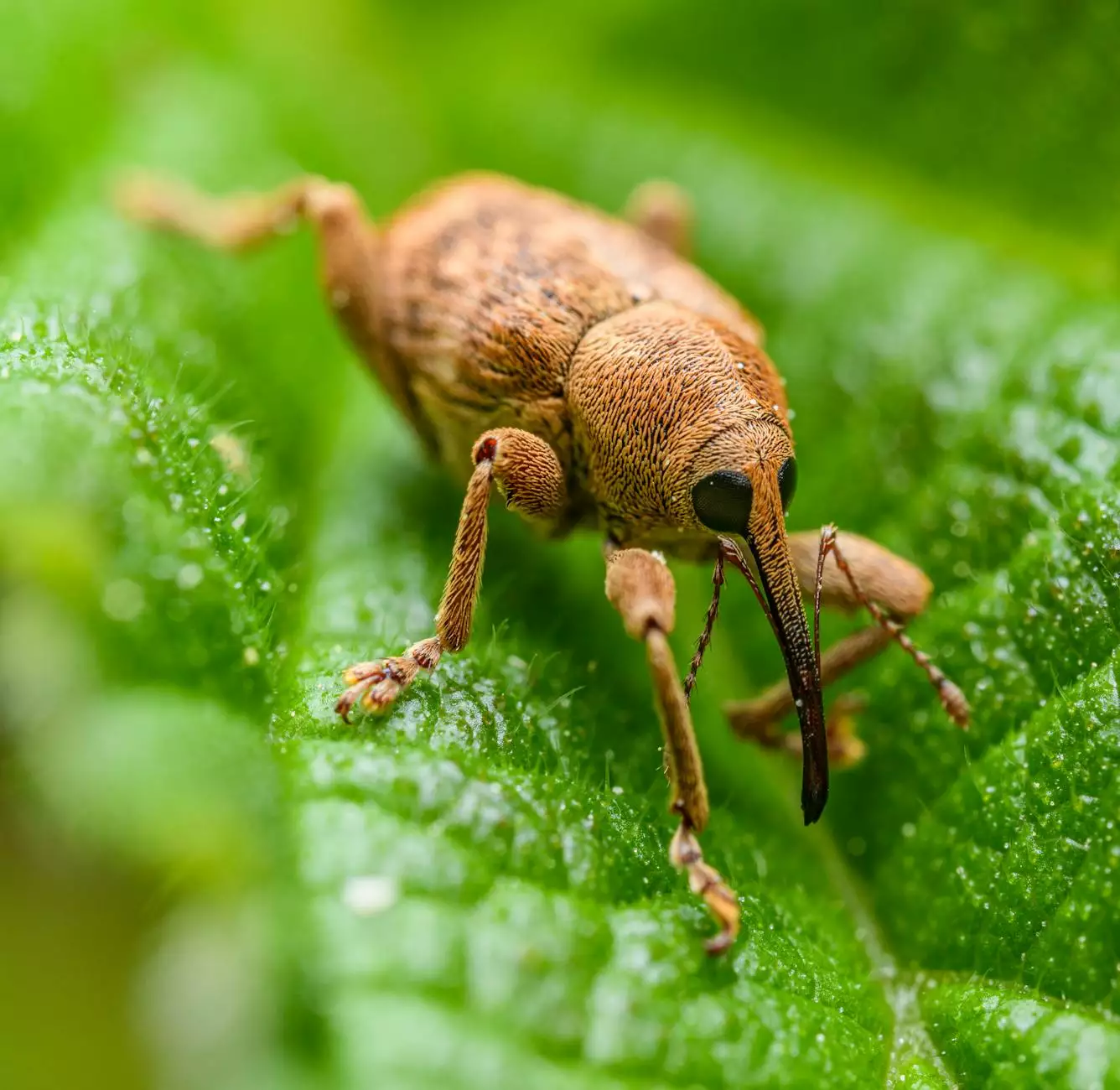Effective Grain Weevil Control: Strategies for Sustainable Farming

Grain weevils (Sitophilus granarius) are formidable pests that can significantly affect grain storage and crop health. As farmers and agricultural enthusiasts, it is imperative to understand effective grain weevil control strategies to safeguard your harvest and maintain a healthy farming environment.
Understanding Grain Weevils
Grain weevils are small, brown insects known for their destructive feeding habits. They primarily infest stored grains but can also affect other dried plant materials. Understanding their life cycle is essential in formulating effective control methods.
The Life Cycle of Grain Weevils
Grain weevils undergo complete metamorphosis, which includes four stages: egg, larva, pupa, and adult. The entire life cycle can be completed in as little as 30 days under optimal conditions, making timely intervention critical.
Signs of Infestation
- Presence of Small Holes: Small, round holes in grain kernels indicate feeding activity.
- Powdery Residue: Fine powder or frass often indicates weevil presence.
- Increased Insect Activity: Noticing adult weevils crawling among stored grains points to an infestation.
Preventing Grain Weevil Infestations
Prevention is always better than cure. Implementing the following strategies can help avert the threat of grain weevils:
1. Proper Grain Storage
Storing grains properly can significantly reduce the risk of weevil infestations. Ensure that storage facilities are well-sealed, dry, and cool. Maintaining low humidity levels can deter weevil activity.
2. Regular Inspection
Regularly inspecting stored grains for signs of infestation allows for early intervention. Implement a systematic routine to examine grain stores, especially after harvest season.
3. Use of Quality Grain Equipment
Investing in high-quality farming equipment can enhance the storage conditions of grains. Utilize proper grain bins with aeration systems to maintain optimal conditions that deter pest infestations.
Effective Grain Weevil Control Methods
When faced with an infestation, labor-intensive and methodical approaches are required for effective grain weevil control. Below are several strategies that have proven effective:
1. Chemical Control Options
If an infestation occurs, chemical pesticides can be employed. Always follow the manufacturer's instructions for the safe application of pesticides. Consider using:
- Boric Acid: A widely used insecticide that can effectively reduce weevil populations.
- Insect Growth Regulators (IGRs): These disrupt the development of weevils, preventing adults from maturing.
2. Natural Pest Control
For those seeking organic solutions, there are several natural methods to control grain weevils:
- Diatomaceous Earth: This natural powder can be sprinkled around grain storage areas to kill weevils by dehydrating them.
- Neem Oil: Extracted from the seeds of the neem tree, this oil acts as a repellent and can disrupt the reproductive cycle of weevils.
The Role of Farm Equipment Repair in Pest Management
Maintaining your agricultural equipment is crucial in ensuring the longevity and efficiency of your farming practices. Broken or inadequate equipment can lead to inefficiencies that may encourage the presence of pests like weevils. Here’s how:
1. Regular Maintenance of Storage Equipment
Ensure that your grain storage equipment, such as silos and bins, is regularly inspected and repaired. Cracks and openings can offer entry points for weevils.
2. Efficient Grain Handling Equipment
Reliable cargo and transport machinery can minimize grain handling time, reducing the exposure of grains to pests. Invest in farming equipment repair services to keep your equipment in optimal condition.
Monitoring and Record Keeping
Effective grain weevil control relies heavily on monitoring and record-keeping. Establishing a pest management plan that includes:
1. Continuous Monitoring
Utilize traps specifically designed for grain weevils to assess population densities. Regularly check the traps and record data to identify trends over time.
2. Documentation of Treatments
Maintain detailed records of all pest management actions. This documentation will help you evaluate the effectiveness of various treatment options over time, allowing for necessary adjustments.
Community and Collaboration
Combating grain weevil infestations can often benefit from community collaboration. By sharing knowledge and resources, farmers can effectively manage pest populations:
1. Participating in Local Farmer Groups
Engaging with local agricultural associations can provide valuable insights and strategies tailored to your geographic area. These groups often share information on effective treatments and preventive measures.
2. Educational Workshops
Attending workshops focused on pest management and sustainable farming practices can enhance your knowledge and skills in combating grain weevils.
Conclusion
Understanding and implementing effective grain weevil control measures is essential for any farmer looking to protect their crops and optimize yield. By utilizing a combination of prevention strategies, effective control methods, and maintaining functional farm equipment, farmers can successfully combat these pests. An integrated approach not only fosters better grain storage practices but also enhances the sustainability of agricultural practices.
Take Action Today!
To ensure the health of your grains and farm produce, consider reaching out to TSGC Inc. for expert advice on farming equipment repair and effective pest management strategies. Protect your investment and enhance your farming success!








